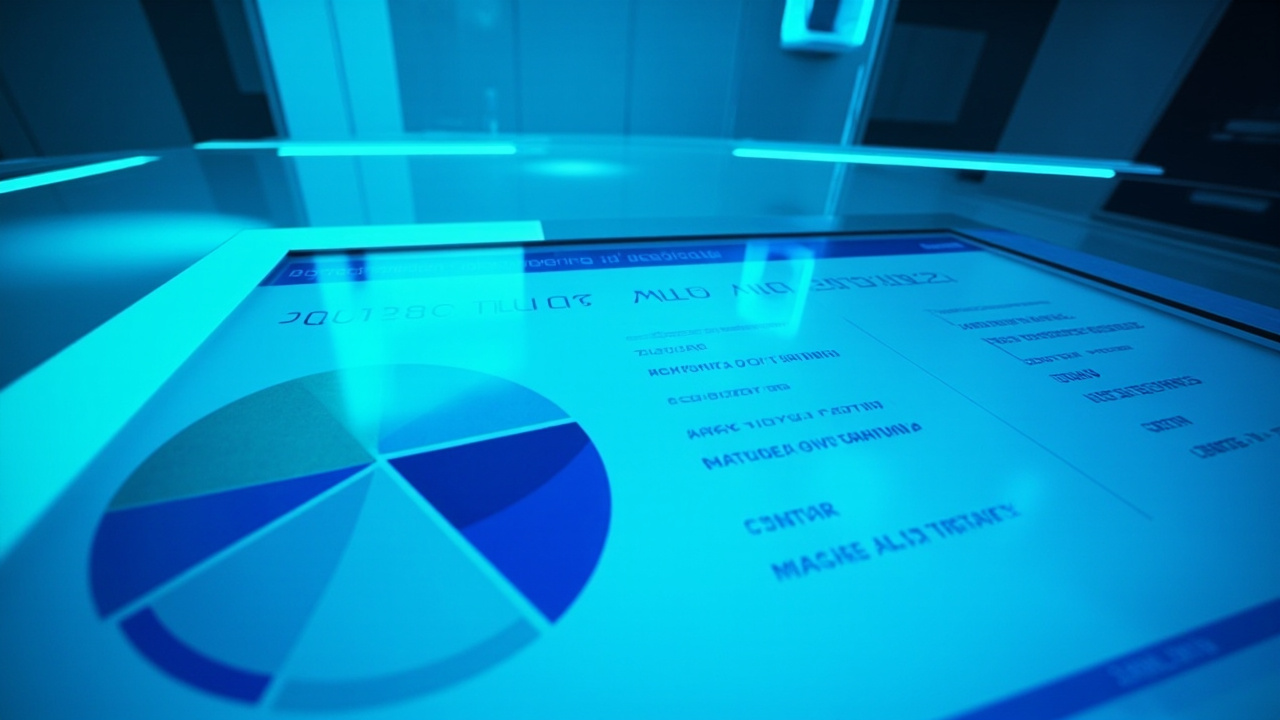In the rapidly evolving world of software development, maintaining high-quality applications is a formidable challenge. As applications grow in complexity, traditional testing methods often fall short, struggling to keep pace with the demands of modern development cycles. The stakes are high: a single undetected bug can lead to significant financial losses, damage to reputation, and user dissatisfaction. In this comprehensive exploration of software testing, we’ll delve into the intricacies of ensuring software quality and the innovative solutions that are revolutionizing the field, including the subtle integration of AI-powered tools like GenQE.
To truly understand the critical role of software testing, one must first appreciate the complexity of today’s software ecosystems. Software is no longer a simple set of instructions; it’s an intricate web of interactions across various platforms, devices, and user environments. This complexity necessitates a robust approach to testing one that is as dynamic and adaptable as the software itself. As we delve deeper, we’ll explore how cutting-edge technologies are reshaping the landscape of software testing and the impact this has on development efficiency and product quality.
In this article, we will dissect the multifaceted world of software testing, examining traditional methods, emerging trends, and innovative solutions. We’ll highlight the role of artificial intelligence in transforming testing processes, with a particular focus on GenQE, an AI-driven platform leading the charge in this technological evolution. By the end of this journey, you’ll gain a comprehensive understanding of modern software testing and actionable insights to enhance your own development practices.
Understanding the Foundations of Software Testing

Software testing is an integral component of the software development lifecycle. It ensures that applications perform as intended and meet user expectations. But what exactly does software testing entail, and why is it so crucial?
The Role of Testing in Software Development
At its core, software testing is about verification and validation. Verification involves checking whether the software meets specified requirements, while validation ensures the software fulfills its intended purpose. Both aspects are critical to delivering a functional and reliable product.
“Software testing is the unsung hero of the development process, quietly ensuring that the final product is robust and ready for the real world.”
Traditional testing methods have focused on manual processes, where testers meticulously follow test cases to identify defects. While effective, these methods are time-consuming and often fail to scale with the increasing complexity of software. In an era where software updates are frequent and user expectations are high, the need for a more agile and efficient approach to testing is evident.
Types of Software Testing
There are several types of software testing, each serving a unique purpose
- Unit Testing: Focuses on individual components to ensure they work as expected. This is often automated and is the first line of defense in detecting bugs.
- Integration Testing: Evaluates the interaction between integrated units or components. It ensures that combined parts of an application work together as intended.
- System Testing: Tests the entire system as a whole to ensure it meets specified requirements. This is a comprehensive test that validates the end-to-end functionality of the application.
- Acceptance Testing: Validates the software against user requirements and business needs. It is often the final step before the software is released to the market.
Each testing type plays a crucial role in catching bugs early and ensuring a seamless user experience. For instance, unit testing can catch issues at the code level, while system testing can reveal defects that only surface when the software is used in a real-world scenario.
Challenges in Modern Software Testing
Modern software development introduces several challenges for testers. The increasing complexity of applications, rapid release cycles, and diverse user environments demand a more agile and efficient approach to testing. Traditional methods often struggle to keep up, resulting in longer development times and higher costs. The diversity of user devices and operating systems further complicates the testing landscape, as applications must perform consistently across numerous environments.
The Shift Towards Automation in Testing

As software complexity grows, the need for efficient and scalable testing solutions becomes paramount. Automation is at the forefront of this shift, offering a way to streamline testing processes and reduce manual effort.
The Rise of Test Automation
Test automation involves using software tools to execute test cases and compare actual outcomes with expected results. This approach significantly speeds up the testing process and reduces human errors. Automated tests can be run more frequently and across multiple environments, enhancing test coverage and reliability.
“Automation is not about replacing manual testers but empowering them to focus on more complex, creative tasks.”
One of the key benefits of automation is its ability to quickly execute repetitive and time-consuming tasks, freeing up testers to focus on more strategic areas. For example, regression testing, which involves re-running functional and non-functional tests to ensure that previously developed and tested software still performs after a change, can be efficiently handled through automation.
Challenges in Automation
Despite its advantages, test automation comes with its own set of challenges. Creating and maintaining automated test scripts requires technical expertise and can be resource-intensive. Additionally, automated tests can become brittle and fail when UI elements change, leading to high maintenance costs.
This is where AI-powered tools like GenQE come into play. By leveraging artificial intelligence, GenQE automates test generation and execution, reducing the dependency on manual script maintenance. Its self-healing capabilities ensure tests remain robust even as software evolves. This reduces the time and effort required to maintain and update test scripts, making automation a more sustainable solution.
Practical Applications of Automation
Consider a scenario where a mobile application needs to be tested across multiple devices and operating systems. Manually executing these tests would be time-consuming and prone to errors. Automated testing, on the other hand, can quickly execute these tests, ensuring the application functions seamlessly across all platforms. This not only speeds up the testing process but also ensures a consistent user experience across devices.
The Impact of Artificial Intelligence on Testing

Artificial intelligence is transforming industries across the board, and software testing is no exception. By incorporating AI, testers can achieve greater accuracy, efficiency, and adaptability.
AI-Driven Test Generation and Execution
AI can analyze software requirements, user behavior, and historical data to automatically generate test cases. This reduces the reliance on manual test design and improves test coverage. AI can identify patterns and trends that might be overlooked by human testers, ensuring that all critical paths are tested.
“AI is not just a tool for automation; it’s a partner in innovation, helping testers uncover insights they might have missed.”
Platforms like GenQE utilize machine learning to optimize test execution, prioritizing test cases based on risk analysis. This ensures that critical areas are tested first, improving the likelihood of catching high-impact defects early. By focusing on areas with the highest risk, AI-driven testing can significantly reduce the time and resources required for testing.
Self-Healing Capabilities
One of the most significant challenges in automation is maintaining test scripts. Changes to UI elements can cause scripts to break, resulting in costly downtime. AI-powered tools can overcome this challenge with self-healing capabilities, automatically adjusting scripts to accommodate changes. This minimizes the need for manual intervention and keeps the testing process running smoothly.
Early Defect Detection
AI excels at pattern recognition, making it adept at identifying anomalies and potential defects early in the development cycle. By catching issues before they reach production, AI helps prevent costly fixes and enhances overall software quality. This proactive approach to defect detection ensures that issues are addressed before they impact users.
Ensuring Comprehensive Test Coverage

Comprehensive test coverage is crucial for delivering a reliable and user-friendly product. It involves testing all aspects of the application, from functionality to performance and security.
The Importance of Test Coverage
Test coverage refers to the extent to which the software’s functionalities are tested. High test coverage ensures that most, if not all, code paths are exercised, reducing the likelihood of undetected bugs. Comprehensive coverage is essential for identifying edge cases and rare scenarios that might not be immediately apparent.
“Comprehensive test coverage is the safety net that catches what manual testing might miss.”
Achieving comprehensive coverage requires a combination of testing types and tools. While manual testing is essential for exploratory and usability testing, automated tools can efficiently handle regression and load testing. By combining different testing approaches, teams can ensure that all aspects of the application are thoroughly tested.
Tools and Strategies for Enhanced Coverage
To achieve optimal test coverage, teams should employ a mix of testing tools and strategies. Automated testing platforms like GenQE can provide extensive coverage across various environments, including web, mobile, APIs, and cloud. By leveraging these tools, teams can quickly and efficiently test applications in diverse environments.
Incorporating code analysis tools can also help identify untested code paths, ensuring that coverage is as comprehensive as possible. These tools can highlight areas of the code that have not been tested, allowing teams to focus their efforts on achieving complete coverage.
Balancing Manual and Automated Testing
While automation is powerful, manual testing remains indispensable, especially for areas requiring human intuition and creativity. The key is to strike a balance, using automation for routine tasks and manual testing for exploratory and user-focused testing. By combining both approaches, teams can ensure that all aspects of the application are thoroughly tested.
Integrating Testing into the Development Pipeline

In today’s fast-paced development environment, integrating testing into the development pipeline is crucial. This approach, known as continuous testing, ensures that quality is maintained throughout the development process.
The Role of Continuous Testing
Continuous testing involves executing automated tests as part of the development pipeline, often triggered by code changes. This enables teams to identify defects early and iterate quickly. By incorporating testing into the development process, teams can ensure that quality is never compromised.
“Continuous testing is the pulse of a healthy development pipeline, ensuring that quality is never compromised.”
By integrating testing with CI/CD tools, developers can receive immediate feedback on their code changes, allowing them to address issues promptly. This accelerates the development process and reduces the risk of defects reaching production.
Benefits of Seamless Integration
Seamless integration of testing tools into the development pipeline enhances collaboration and efficiency. Platforms like GenQE offer seamless integration with popular CI/CD tools like Jenkins, GitHub Actions, and Azure DevOps, making automated testing a natural part of the workflow. This integration not only accelerates release cycles but also reduces the risk of defects reaching production, ultimately improving product quality.
Overcoming Integration Challenges
Integrating testing into the development pipeline can be challenging, particularly for teams new to automation. It’s important to start small, gradually increasing test coverage and complexity as confidence grows. By taking a gradual approach, teams can build the skills and expertise needed to fully integrate testing into their development process.
Harnessing Data for Advanced Testing Insights

Data is a powerful asset in software testing, providing valuable insights that can drive improvements in quality and efficiency.
Leveraging Test Data
Test data refers to the input data used to execute test cases. By analyzing test data, teams can identify patterns, trends, and areas for improvement. This analysis can reveal insights that guide better decision-making and enhance testing strategies.
“Data-driven testing is like having a crystal ball, revealing insights that guide better decision-making.”
Platforms like GenQE offer advanced analytics and reporting, providing detailed insights into test results and software quality trends. These insights enable teams to make informed decisions about where to focus their testing efforts. By leveraging data, teams can optimize their testing processes and improve overall software quality.
Predictive Analytics in Testing
Predictive analytics uses historical data and machine learning to forecast potential issues and optimize testing strategies. By predicting where defects are likely to occur, teams can proactively address these areas, improving overall software quality. This proactive approach ensures that testing efforts are focused on areas with the highest risk, reducing the likelihood of defects reaching production.
Actionable Insights for Continuous Improvement
Data-driven testing provides actionable insights that drive continuous improvement. By regularly reviewing test data and insights, teams can refine their testing strategies, enhance coverage, and reduce time to market. This continuous improvement cycle ensures that testing processes remain efficient and effective.
Conclusion: Embracing the Future of Software Testing

As we navigate the complexities of modern software development, it’s clear that traditional testing methods alone are no longer sufficient. The integration of automation, AI, and data-driven insights is transforming the landscape of software testing, offering unprecedented efficiency and accuracy.
Platforms like GenQE exemplify the innovative solutions driving this evolution, providing AI-powered tools that enhance test automation and quality assurance. By embracing these advancements, organizations can reduce costs, accelerate development cycles, and deliver higher-quality products.
“In the world of software testing, innovation is the key to unlocking quality, efficiency, and user satisfaction.”
As you explore the tools and strategies discussed in this article, consider how they can be applied to your own development practices. Whether you’re looking to enhance test coverage, integrate testing into your pipeline, or leverage data for insights, the future of software testing holds endless possibilities.
For organizations eager to stay ahead of the curve, exploring AI-driven platforms like GenQE offers a valuable opportunity to refine testing processes and ensure robust software quality. Take the next step in your testing journey and discover how these innovations can transform your approach to software quality engineering.
Discover More Innovative Solutions
Want to learn more about the tools and technologies discussed in this article? Explore how these innovations can be tailored to your specific needs and workflow requirements.
Our team of experts is available to answer your questions and provide personalized insights into how modern solutions like GenQE can address your specific challenges.
If the link above does not work, please visit: https://calendly.com/dm-csimplifyit/30min?month=2025-05